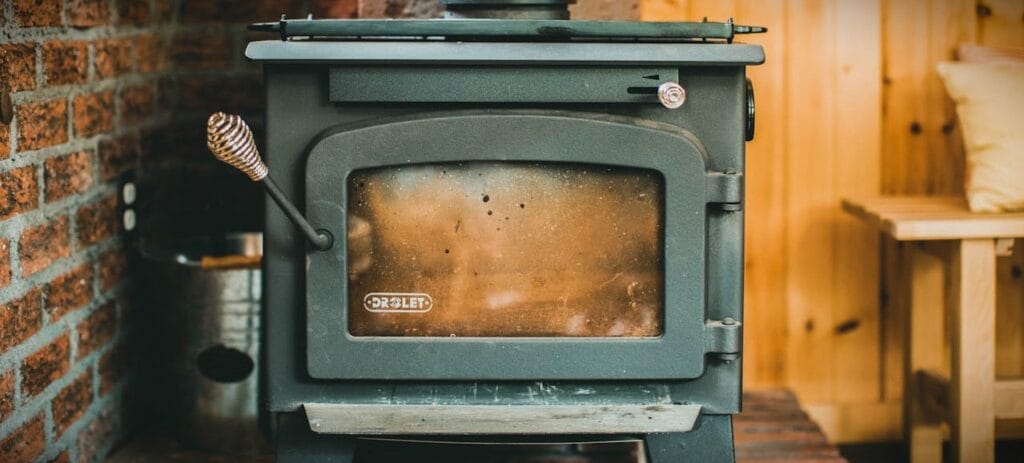Table of contents
Introduction
Finding affordable firewood for winter or outdoor bonfires can be a challenge. With rising energy costs, sourcing firewood locally is both cost-effective and eco-friendly.
That’s where our Fire wood Finder Tool comes in. Simply enter your location to connect with:
- Local suppliers
- Tree surgeons
- Arborists
Find free firewood after storm cleanups, cheap kiln-dried logs, or seasoned wood ready to burn—all tailored to your area.
The Firewood Finder Tool
Ready to find wood for burning near you? Use our Firewood Finder Tool to search for local free logs from tree surgeons, arborists, or stores selling kiln dried firewood in your area—whether you’re looking for free or affordable wood for burning.
How to Use Our Firewood Finder Tool
Finding firewood near you has never been easier. Our Firewood Finder Tool allows you to connect with local sources of free or affordable logs quickly. Whether you’re looking for tree surgeons, arborists, or shops selling kiln-dried wood, our tool provides real-time results based on your location.
Step-by-Step Guide to Using the Firewood Finder Tool:
- Enter Your Location: Start by entering your town or postcode into the search box.
- Get Local Results: The tool instantly scans your area and shows you nearby tree surgeons, arborists, and firewood sellers.
- Contact a Provider: Browse through the list of available logs sources and contact the one that suits your needs.
- Get Free or Affordable Firewood: Choose from free wood after tree removals, cheap bundles, or kiln-dried logs for stoves.
Benefits of Using the tool:
- Instant Results: No more searching multiple websites. Get real-time, localized firewood listings instantly.
- Reliable Providers: Our API connects you to trusted, nearby tree surgeons and arborists.
- Flexible Options: Whether you need free logs or are willing to buy seasoned or kiln-dried logs, the toolhas options for every budget.
Saving money on firewood is just one way to keep costs down while staying warm. Explore our eco money-saving tips for more sustainable ways to save.
What You Can Find with the Finder tool:
- Free firewood from tree surgeons and arborists after tree removals
- Cheap kiln-dried firewood perfect for wood-burning stoves
- Seasoned firewood for winter or outdoor use
The Firewood Finder tool is designed to make your life easier. You can find exactly what you need without wasting time or effort.

Where to Find Free and Cheap Firewood Near You
Finding free or affordable firewood can be easier than you think if you know where to look. From local tree surgeons to online platforms, there are several reliable sources to explore. Below is a summary of the best places to find firewood and key tips for each.
| Source | Description | Tips |
| Tree Surgeons & Arborists | Surplus wood from tree removals, often free or low-cost. | Use the tool to find local tree surgeons offering firewood. |
| Storm Cleanup | Fallen trees and branches after storms. | Check local news or community boards for cleanup events. Bring tools. |
| Construction Sites | Scrap wood from building or demolition projects. | Ensure the wood is untreated for safe burning. |
| Online Platforms | Websites like Freecycle, Craigslist, and Facebook Marketplace for firewood listings. | Set up alerts for “free firewood” or similar terms. |
| Local Sawmills | Offcuts or scrap wood from sawmills. Often sold at low prices or given away. | Use the API to locate nearby sawmills. |
Tips for Collecting Free Firewood
- Act Fast: Free wood for burning opportunities are often claimed quickly.
- Build Relationships: Regularly connect with tree surgeons or sawmill owners for future supplies.
- Be Prepared: Keep essential tools like chainsaws or hand saws with you for quick collection.
By exploring these sources and using our Firewood Finder tool, you can easily locate free or affordable firewood near you. Whether you’re gathering wood from storm damage or sourcing offcuts from a sawmill, these options can help you stock up without spending too much.
Buying Firewood: Kiln-Dried and Seasoned Wood
While finding free firewood is great, sometimes buying wood for burning is necessary, especially if you’re looking for high-quality wood that burns efficiently. Two of the best options are kiln-dried firewood and seasoned firewood. These types of wood are ideal for wood-burning stoves, fireplaces, and outdoor fire pits.
| Type of Firewood | Description | Benefits |
| Kiln-Dried Firewood | Firewood dried in a kiln, reducing moisture content to below 20%. | Burns cleaner and hotter, produces less smoke, ready to burn immediately. |
| Seasoned Firewood | Naturally dried firewood, stored for months to reduce moisture. | More affordable than kiln-dried, but still efficient for heating and stoves. |
Using locally sourced or recycled firewood is a great step toward sustainable living. Learn more about how to live sustainably in the UK with practical tips for everyday life.
Why Kiln-Dried Firewood?
Kiln-dried firewood is dried in a controlled environment, reducing its moisture content to below 20%. This makes it one of the cleanest and most efficient options for burning. It produces less smoke and creosote buildup in your chimney, and it burns hotter, making it perfect for wood-burning stoves.
- Tip: Kiln-dried wood is great for indoor use or if you need wood for burning that’s ready to burn right away.
Use our Firewood Finder tool to locate local suppliers of kiln-dried firewood near you. This is a convenient way to ensure you’re getting quality firewood that’s ready to use.
What is Seasoned Firewood?
Seasoned firewood is naturally dried over several months. While it may still contain a bit more moisture than kiln-dried wood, it’s a more affordable option for people looking to stock up on firewood for the winter. It’s often available locally, especially through tree surgeons or sawmills.
- Tip: Make sure the wood has been seasoned for at least 6 months to ensure it burns efficiently.
Our Firewood Finder tool can also help you find seasoned firewood suppliers near you, making it easy to compare prices and stock up for the colder months.
Benefits of Using Our Tool for Kiln-Dried and Seasoned Wood
- Convenience: Enter your location and find local suppliers offering both kiln-dried and seasoned firewood.
- Quality Assurance: Get access to trusted suppliers who offer wood that is ready to burn.
- Options: Whether you need wood for indoor stoves, outdoor fire pits, or bulk supplies for the winter, our API connects you with suppliers nearby.
By using our Firewood Finder tool, you can easily compare local suppliers and choose between kiln-dried or seasoned firewood, ensuring you have the best wood for your needs. Whether you’re preparing for winter or just need a few logs for your fire pit, the API makes the process simple and convenient.
Legal and Safety Considerations
Before you head out to collect or buy firewood, it’s important to understand the legal and safety aspects. While firewood can often be found for free or at a low cost, knowing the rules and ensuring safety will protect you and the environment.
1. Collecting Firewood on Private Land
Collecting firewood from private land without permission is illegal. Even if the wood is from a fallen tree, it still belongs to the landowner. Always seek permission before cutting or collecting firewood on private property.
- Tip: Some landowners are open to giving away fallen wood, especially after storms. A polite inquiry can go a long way in securing free firewood.
2. Common Land Rights in the UK (Estovers)
In the UK, certain areas are designated as common land, where some individuals may have the right to collect wood for burning, known as estovers. However, this right is typically limited to personal use and does not allow for large-scale collection or selling of firewood. Always verify your rights and responsibilities before collecting wood on common land.
- Tip: Local councils or forest authorities can provide more information on where and how wood for burning can be collected legally.
3. Safety Tips for Collecting Firewood
Safety should always be a top priority when collecting or handling logs. Whether you’re cutting your own logs or handling split firewood, it’s essential to have the right equipment and follow best practices.
- Wear Protective Gear: Always use gloves, eye protection, and sturdy footwear when handling or cutting wood.
- Use Proper Tools: Ensure your chainsaw or handsaw is well-maintained and in good working condition.
- Avoid Large, Unstable Trees: If you’re not trained in felling trees, avoid cutting down large or unstable trees. It’s best to leave tree felling to professionals.
4. Environmental Considerations
When collecting logs, it’s crucial to consider the environmental impact. Overharvesting or removing wood from sensitive ecosystems can disrupt habitats and cause long-term damage. Stick to areas where firewood collection is allowed and sustainable.
- Tip: Opt for fallen wood or branches that don’t disturb the surrounding environment. This helps preserve ecosystems while still gathering wood for burning.
Summary of Legal and Safety Considerations:
| Aspect | Details |
| Private Land | Always get permission before collecting wood on private property. |
| Common Land Rights (Estovers) | Some areas allow limited firewood collection, but always check local regulations. |
| Safety | Wear protective gear, use proper tools, and avoid cutting large, unstable trees unless you’re experienced. |
| Environmental Impact | Collect fallen wood and avoid disturbing sensitive ecosystems to minimize environmental harm. |
By understanding these legal and safety considerations, you can enjoy gathering or buying firewood responsibly. Whether you’re collecting from private land, common areas, or buying from local suppliers, following these guidelines ensures a safe and lawful experience.

Tools and Equipment for Collecting Firewood
Collecting firewood requires the right tools and equipment to ensure efficiency and safety. Whether you’re cutting your own wood or transporting firewood from a supplier, having the proper tools on hand can make the process much smoother.
1. Cutting Tools
If you plan to collect firewood from fallen trees or branches, you’ll need tools that can handle cutting and splitting the wood.
- Chainsaws: A chainsaw is one of the most efficient tools for cutting through thick branches or fallen trees. Choose a reliable, well-maintained chainsaw for faster, safer cutting.
- Handsaws: For smaller jobs or when you’re cutting wood in tight spaces, a handsaw offers a lightweight, portable option.
- Axes and Hatchets: These tools are essential for splitting logs into smaller, more manageable pieces. A sharp axe will help you get the job done with fewer swings, reducing effort and strain.
2. Splitting and Loading Tools
After cutting the wood, you’ll need to split and transport it. Here are a few key tools for these tasks:
- Log Splitters: If you’re collecting a large amount of firewood, a log splitter can save time and energy. Electric or gas-powered models can split logs quickly and with minimal effort.
- Sledgehammers and Wedges: For tougher logs, a sledgehammer and wedge combination can help break the wood down into smaller pieces.
- Firewood Carts: Once your wood is split, a firewood cart makes transporting the logs easier. Look for a sturdy cart that can handle uneven terrain or large loads.
3. Transportation Options
Transporting firewood safely is key, especially if you’re moving it over long distances or rough terrain.
- Pickup Trucks: If you’re gathering a large quantity of wood for burning, a pickup truck is ideal for transporting it. Secure the load with ropes or straps to avoid any movement during transport.
- Trailers: For larger hauls, a trailer attached to your vehicle provides more space for transporting split logs. Make sure the trailer is rated for the weight and properly secured.
- Roof Racks or Cargo Boxes: If you don’t have a truck or trailer, a roof rack or cargo box can be a convenient option for transporting smaller amounts of firewood.
Essential Safety Gear
Safety should always be a priority when handling logs and using cutting tools. Here’s what you need to stay safe:
- Gloves: Protect your hands from splinters, cuts, and blisters when handling rough wood.
- Safety Goggles: Prevent wood chips or debris from getting into your eyes while cutting.
- Sturdy Boots: Wear heavy-duty boots with a good grip to avoid slips and protect your feet from falling logs or sharp tools.
- Ear Protection: Chainsaws and other powered tools can be loud, so using ear protection is essential for long-term hearing safety.
Summary of Tools and Equipment for Firewood Collection:
| Tool/Equipment | Use |
| Chainsaws | Cutting large branches or fallen trees quickly and efficiently. |
| Handsaws | Lightweight option for cutting smaller branches or in confined spaces. |
| Axes and Hatchets | Splitting logs into manageable pieces for burning. |
| Log Splitters | Electric or gas-powered tools to quickly split large quantities of wood. |
| Sledgehammers and Wedges | Breaking down tough logs into smaller, split pieces. |
| Firewood Carts | Easily transporting split wood over uneven terrain. |
| Pickup Trucks/Trailers | Transporting large quantities of firewood. |
| Roof Racks or Cargo Boxes | Moving smaller amounts of firewood when larger vehicles aren’t available. |
| Safety Gear | Gloves, goggles, boots, and ear protection to keep you safe while cutting and transporting wood. |
By having the right tools and equipment, you’ll be well-prepared to collect, split, and transport firewood safely and efficiently. Whether you’re handling a large haul or a small batch, these essential items will make the process much easier and safer.
Seasoning and Storing Your Firewood
To get the most out of your firewood, it’s essential to season and store it properly. Seasoning helps to reduce the moisture content in the wood, making it burn more efficiently and produce more heat. Proper storage also ensures your logs stay dry and ready to use when you need it.
1. What is Seasoning?
Seasoning logs means allowing it to dry out and reduce its moisture content. Freshly cut or “green” wood contains up to 50% water, which makes it hard to burn and creates a lot of smoke. By seasoning the wood, you can lower the moisture content to around 20%, which improves its burn efficiency.
- Tip: Seasoned wood burns hotter, produces less smoke, and reduces creosote buildup in chimneys.
2. How to Season Firewood Properly
Seasoning wood for burning is a simple process, but it requires patience and the right conditions. Here’s how to do it:
- Cut and Split Early: Cut and split your firewood as soon as possible. Smaller pieces dry faster than large logs.
- Stack the Wood Properly: Stack the wood in a crisscross or grid pattern to allow airflow between the pieces. This helps the wood dry evenly.
- Keep It Off the Ground: Use a firewood rack or pallets to elevate the wood stack and prevent moisture from the ground from seeping in.
- Cover the Top: Cover the top of the stack with a tarp, but leave the sides open for airflow. This keeps rain off while allowing moisture to escape.
- How Long Does It Take?
- Softwoods (pine, spruce): 6-12 months
- Hardwoods (oak, maple): 12-24 months
- Tip: Use a moisture meter to check the wood’s moisture content. Wood for burning should have a moisture content of 20% or less to burn efficiently.
3. Storing Your Firewood
Once your firewood is seasoned, it’s important to store it correctly to keep it dry and ready to use. Proper storage will also prevent rot and insect infestations.
- Choose the Right Location: Store firewood in a dry, well-ventilated area. A covered area outside is ideal, but make sure it’s not directly against your house to avoid attracting pests.
- Use a Firewood Rack: A log rack elevates the wood off the ground, keeping it dry and free from moisture.
- Avoid Plastic Covers: While it’s tempting to use a plastic cover, these can trap moisture and create mold. Instead, use a breathable cover that protects the wood while allowing airflow.
- Rotate the Pile: Use the oldest wood first. Rotate the stack periodically to ensure you’re always using the most seasoned wood.
Tips for Seasoning and Storing Firewood
- Cut Early: The earlier you cut and split your wood, the sooner it will be ready to burn.
- Keep it Dry: Always protect your logs from rain and ground moisture by using racks and covers.
- Check Moisture Levels: Use a moisture meter to ensure your wood is properly seasoned before burning.
Summary of Seasoning and Storing Firewood:
| Step | Description |
| Seasoning | Reducing the moisture content of firewood to improve burn efficiency. |
| How to Season | Cut, split, stack, elevate, and cover your wood to allow proper drying. |
| Storage | Store in a dry, ventilated space, using firewood racks and breathable covers to prevent moisture buildup. |
| Time to Season | Softwoods take 6-12 months, while hardwoods may require 12-24 months to season fully. |
| Tip | Use a moisture meter to check if firewood is below 20% moisture content for best results. |
By seasoning and storing your firewood properly, you can ensure it’s always ready to burn when you need it. Well-seasoned firewood burns cleaner, produces more heat, and helps reduce the buildup of creosote in chimneys, making it a safer and more efficient option for heating your home.
Pro Tips for Collecting Firewood
Collecting firewood can be a rewarding and cost-effective way to stock up for the colder months. However, it requires a bit of planning and strategy to get the best results. Here are some pro tips to help you collect firewood safely, efficiently, and legally.
1. Build Relationships with Local Tree Surgeons and Arborists
One of the easiest ways to source free or low-cost firewood is by building relationships with local tree surgeons and arborists. These professionals often have surplus wood from tree removals and maintenance jobs.
- Tip: Offer to help remove wood from job sites or let them know you’re available to collect any surplus. Networking with these professionals can give you a steady supply of firewood.
2. Act Quickly After Storms
After a storm, fallen trees and branches can be a great source of free firewood. Local councils or property owners may be eager to have debris cleared, offering an opportunity for you to collect firewood.
- Tip: Stay informed about weather conditions and check local community boards for announcements about storm cleanups. Bring your tools and be prepared to act fast.
3. Know the Regulations
Before collecting firewood, it’s essential to understand the legal requirements in your area. Regulations vary by location, and in some areas, collecting firewood without permission can result in fines.
- Tip: Always check with local authorities or property owners to ensure you’re collecting firewood legally. This is especially important when collecting from public lands or after storms.
4. Be Prepared with the Right Tools
Having the right tools makes all the difference when collecting wood for your fire. From chainsaws to splitting mauls, you’ll need the right equipment to cut and transport your wood safely and efficiently.
- Tip: Keep essential tools like a chainsaw, axe, or handsaw in your vehicle whenever you plan to collect firewood. A sturdy pair of gloves and safety gear will also ensure you’re protected.
5. Take Advantage of Online Listings
Websites like Freecycle, Craigslist, and Facebook Marketplace are great places to find free or affordable firewood. Many individuals offer free firewood after garden cleanups or tree removals.
- Tip: Set up alerts on these platforms for terms like “free firewood” or “firewood near me” so you can respond quickly to new listings.
6. Look for Dead or Fallen Trees
Dead or fallen trees are often the best sources for free firewood, especially in wooded areas. These trees are already down, so there’s less risk involved compared to cutting live trees.
- Tip: Focus on wood that is already on the ground, but remember to always ask for permission before collecting on private or public land.
Key Pro Tips for Collecting Firewood:
| Tip | Details |
| Build Relationships | Network with local tree surgeons and arborists for a regular firewood supply. |
| Act Quickly After Storms | Collect fallen branches and trees after storms, but check local regulations first. |
| Know the Regulations | Ensure you have permission and follow local laws when collecting firewood. |
| Be Prepared with the Right Tools | Carry essential tools like chainsaws, axes, and safety gear to collect wood safely and efficiently. |
| Use Online Listings | Search Freecycle, Craigslist, and other platforms for free or affordable firewood. |
| Look for Dead or Fallen Trees | Focus on collecting dead or fallen trees, but always obtain permission before collecting. |
By following these pro tips, you can source free or affordable firewood more efficiently while staying safe and compliant with local regulations. Whether you’re building relationships with professionals or taking advantage of storm cleanups, these strategies will help you keep your woodpile stocked throughout the year.
Conclusion: Stocking Up on Firewood Made Easy
Finding free or affordable wood for burning doesn’t have to be difficult. Whether you’re sourcing wood from local tree surgeons, collecting after storms, or buying high-quality kiln-dried wood for burning, there are plenty of options to keep your home warm without breaking the bank.
By using the tips and strategies we’ve shared, you can build a reliable supply of logs for the winter or occasional use. Remember, safety and legality are key when collecting or purchasing firewood, so always follow local regulations and ensure you’re properly equipped.
Why Use Our Firewood Finder API?
To make things even easier, our Firewood Finder Tool is here to help. With just a few clicks, you can:
- Find free or affordable firewood from nearby sources.
- Connect with tree surgeons, arborists, and firewood suppliers in your area.
- Save time by accessing real-time listings tailored to your location.
Whether you’re looking for seasoned wood, kiln-dried logs, or free wood from storm cleanups, our API simplifies the search process, helping you find exactly what you need.
Key Takeaways:
- Build relationships with local tree surgeons and arborists for a steady supply of firewood.
- Act quickly after storms to collect fallen trees and branches.
- Use the right tools and safety gear to collect and transport logs efficiently.
Store and season your logs properly to ensure it’s ready for use when you need it.




